Giant reckons their Reign 29er could be the ultimate Enduro machine but what does our resident aficionado of all things big mountain make of it after subjecting it to eight months of testing?
You are seeing this message because you are a trade member of our site. This review can only be accessed, ad free, by our full members. If you would like this review to be available to all our 1.5 million website monthly visitors then contact ross@singletrackworld.com. Removing the members paywall and all external advertising will mean this review can be shared on social media and accessed by a wider audience.
Giant’s Reign has long been a staple of the brand’s mountain bike line up. The design and wheel sizes may have evolved over the years but the Reign has always been there. For 2020, Giant embraced 29er wheels for their Enduro focused Reign Advanced Pro range of bikes and I had the good fortune to be given the opportunity to give one a long term test. The Giant Reign Advanced Pro 2 is the bottom of the range (if you can call a bike that cost four grand that!) and marks the step up from Giant’s more economically priced alloy versions of the Reign. I’ve long been a fan of Giant bikes – I have ridden a few over the years and have always considered them as a brand to recommend to friends when looking at options for their next bike. As such, I was pretty excited when I took delivery of the bike back in early March although the excitement was tempered somewhat when lockdown kicked in and my new Enduro focused machine was reduced to riding only local trails initially and not the big mountains which are my preferred terrain.
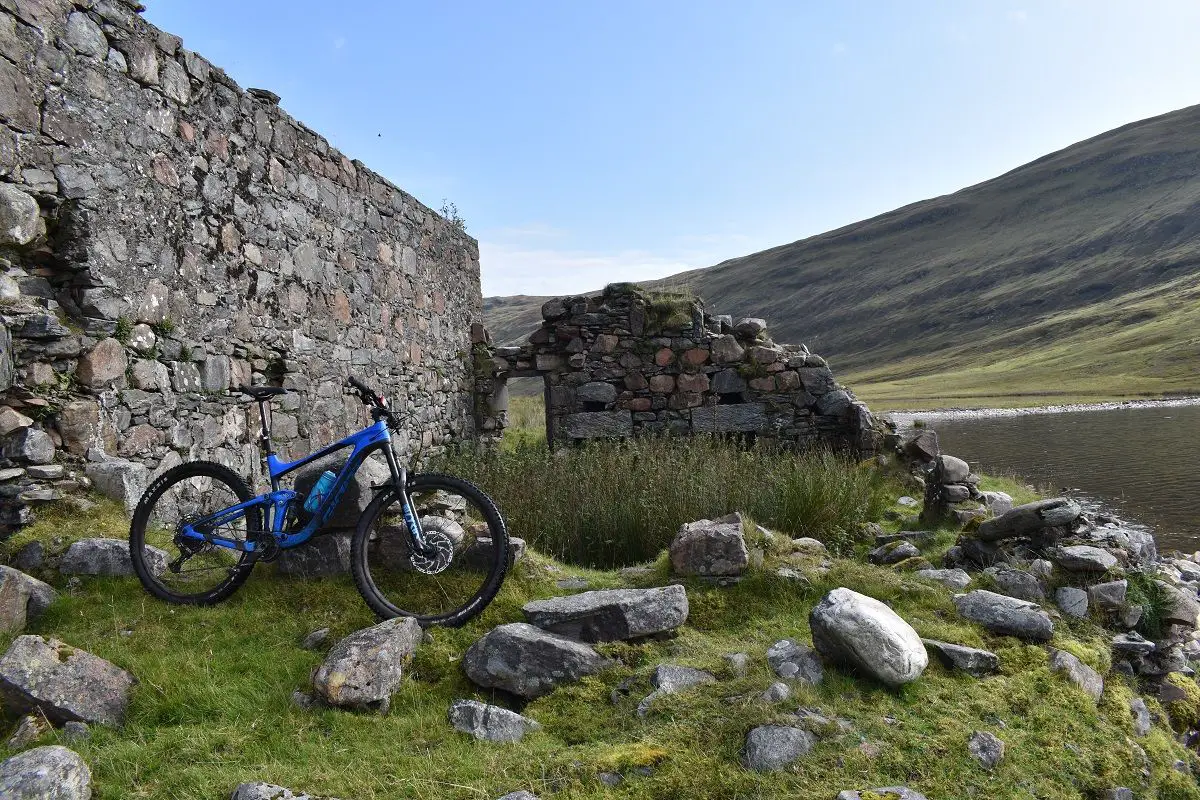
Taking it out of the box, it is hard not to be impressed by the look of the Reign Advanced Pro 2. The bright blue and black colour way with matching highlights on the fork and shock exudes a really classy look while the swooping lines really draw the eye. I know that how a bike looks can often bear no resemblance to how it rides but on first impressions, but I was impressed. If you are going to shell out four grand for a bike, it is important (in my mind at least) that you are getting something that you can appreciate even when you aren’t riding it. On this count, the Giant knocks it out of the park.
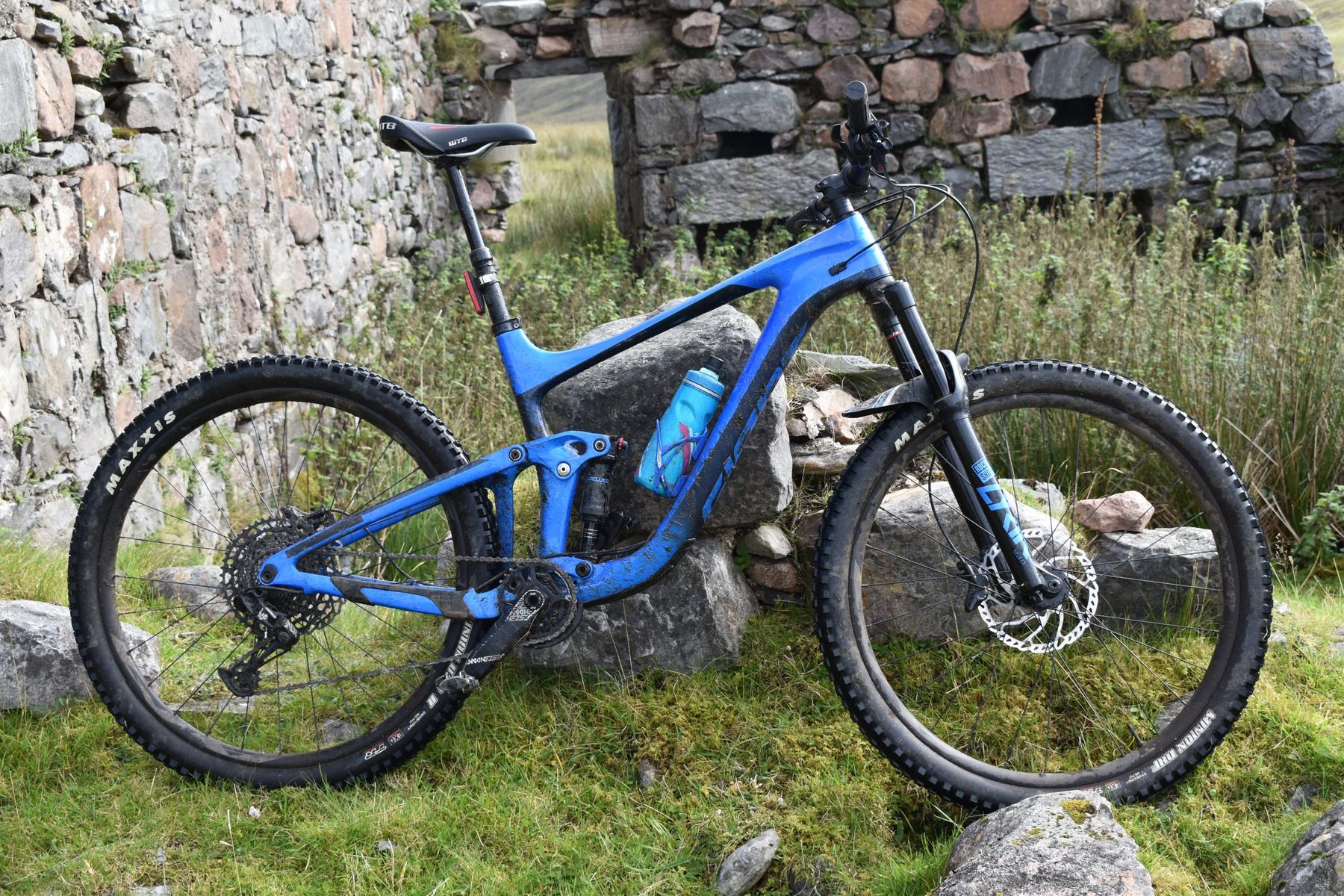
Aesthetics aside, just what do you get for your hard earned? The frame, rear triangle and rocker arm are constructed from advanced grade composite materials (Can we not just call it carbon?) with the now almost obligatory internal cable routing that manufacturers love but mechanics less so. Employing their venerable but still highly effective Maestro suspension design, Giant are bang on trend with their geometry selection offering a reasonably lengthy top tube, shortened stays, a steep seat angle (76.8 degrees) and a slack head angle (65 degrees) thus adhering to the long, low and slack school of thought when it comes to bike design.
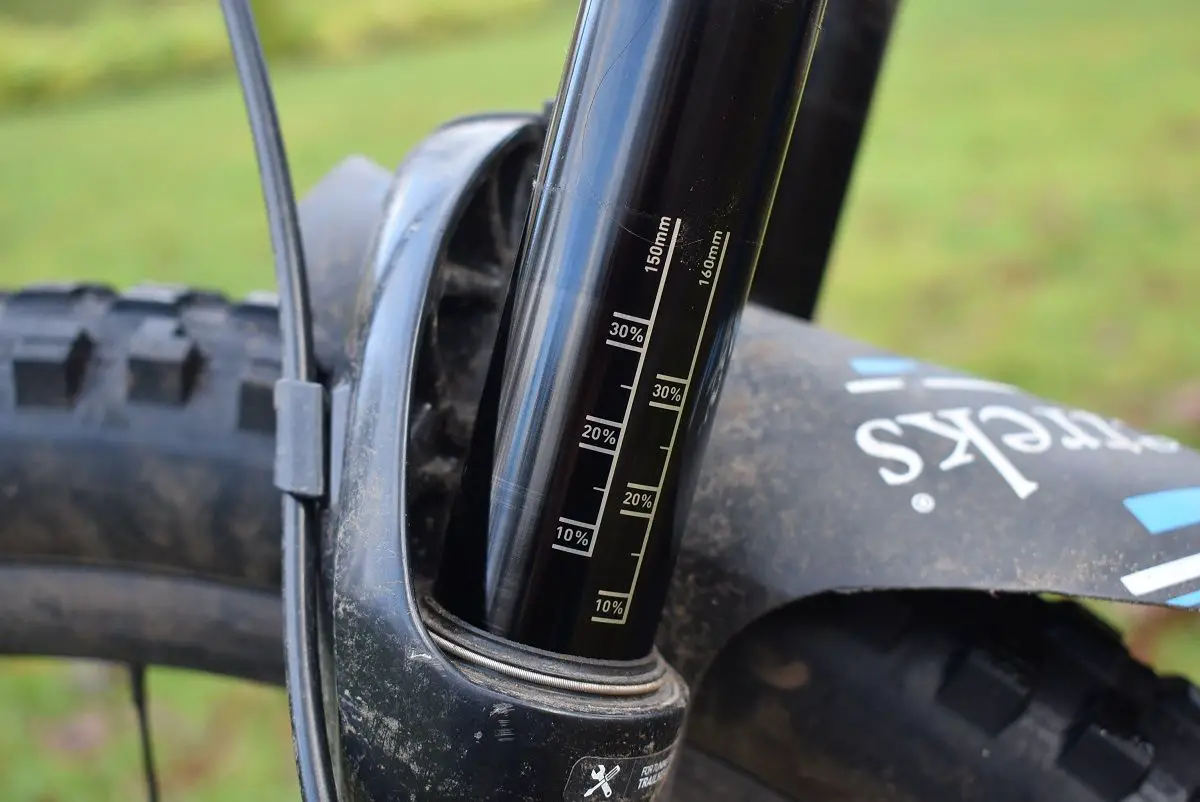
Rear suspension comes in at 146mm employing Rock Shox’s Deluxe Select+ can while up front, up and down bouncy duties are handled by a 160mm Rock Shox Lyrik Select. The rear travel is, on paper at least, a fair bit less than some of the competition so I was keen to see how it translated into real world riding.
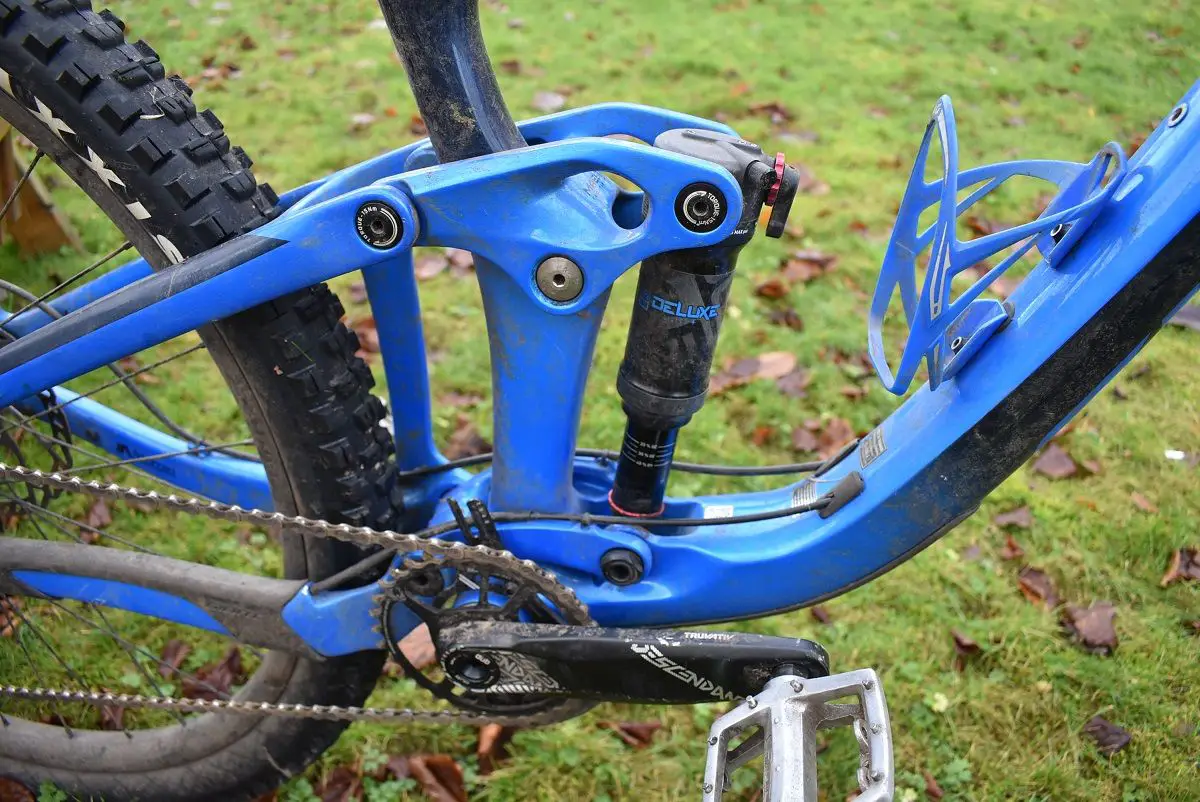
In terms of parts, the drivetrain employed is a SRAM NX number – an 11–50 cassette is mated to an NX rear mech and shifter while the chainset is a Truvativ Descendant with a 32 tooth ring spinning on a DUB press fit bottom bracket. The chain is also an NX one. Included in the package is an MRP chain guide which lasted only five minutes into the first ride before the constant rubbing of chain against guide reduced me to removing it for the duration of the test. To be fair, I never missed it and the chain stayed firmly in place for the entire test so I would question the necessity as even on the bumpiest of terrain, I never experienced any issues. Perhaps racers might miss it but in my case I never regretted removing it.
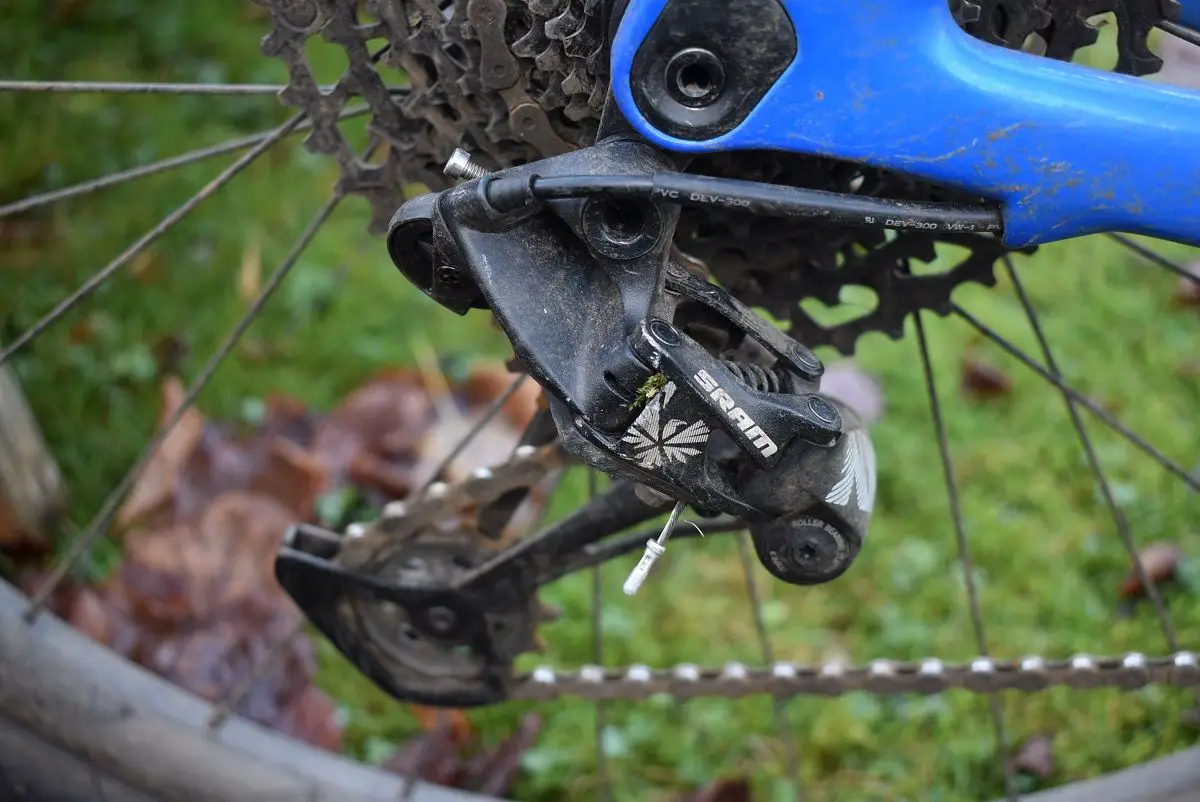
The wheels are Giant’s own Tracker Performance Boost models which run on sealed bearings while the rims are Giant’s own brand AM29 tubeless ready with 30mm internal width. Tyres are Maxxis Minion DHF 2.5 and DHR 2.4 EXO TR Tubeless numbers.
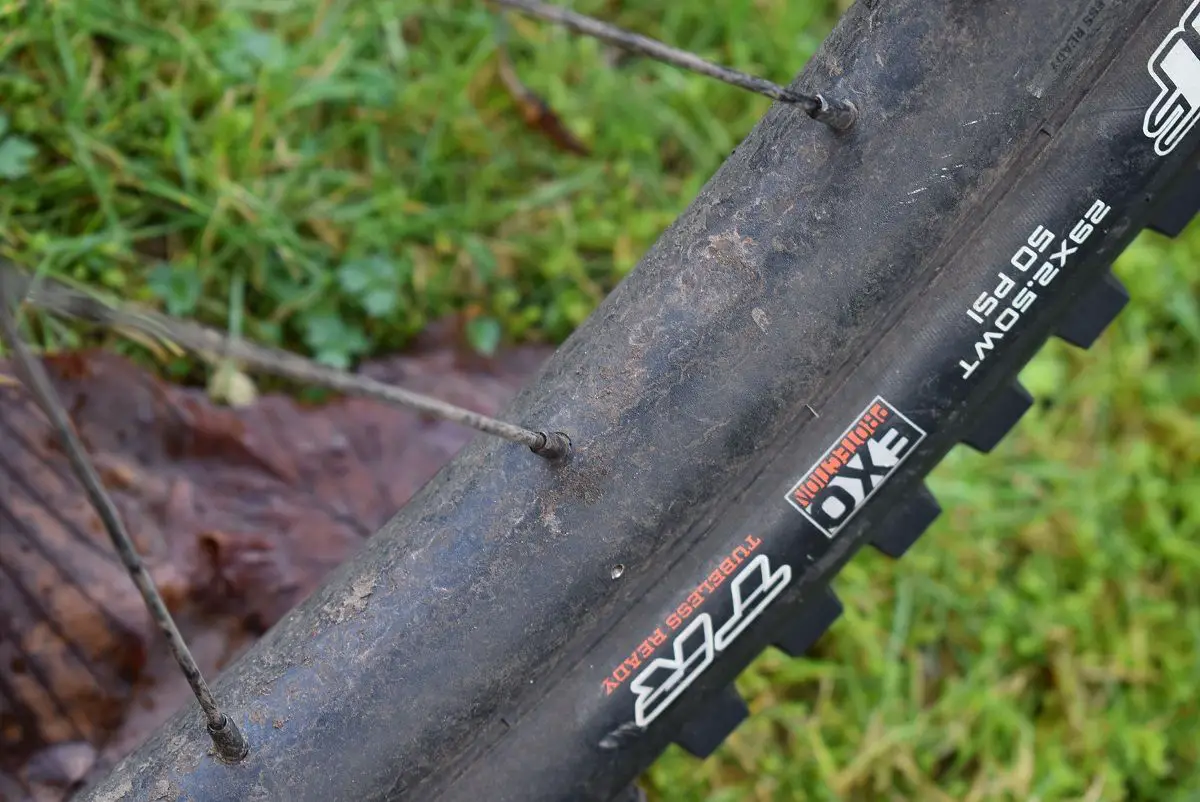
The rest of the finishing kit is all Giant’s own, taken from their Contact series. I know it is easy to get sniffy with in house parts but in my experience, Giant know what they are doing with their branded kit. The 35mm stem and 800 mm bars played nicely together while the Switch Dropper kept working for the entirety of the test, something that cannot always be said for even big name branded droppers.
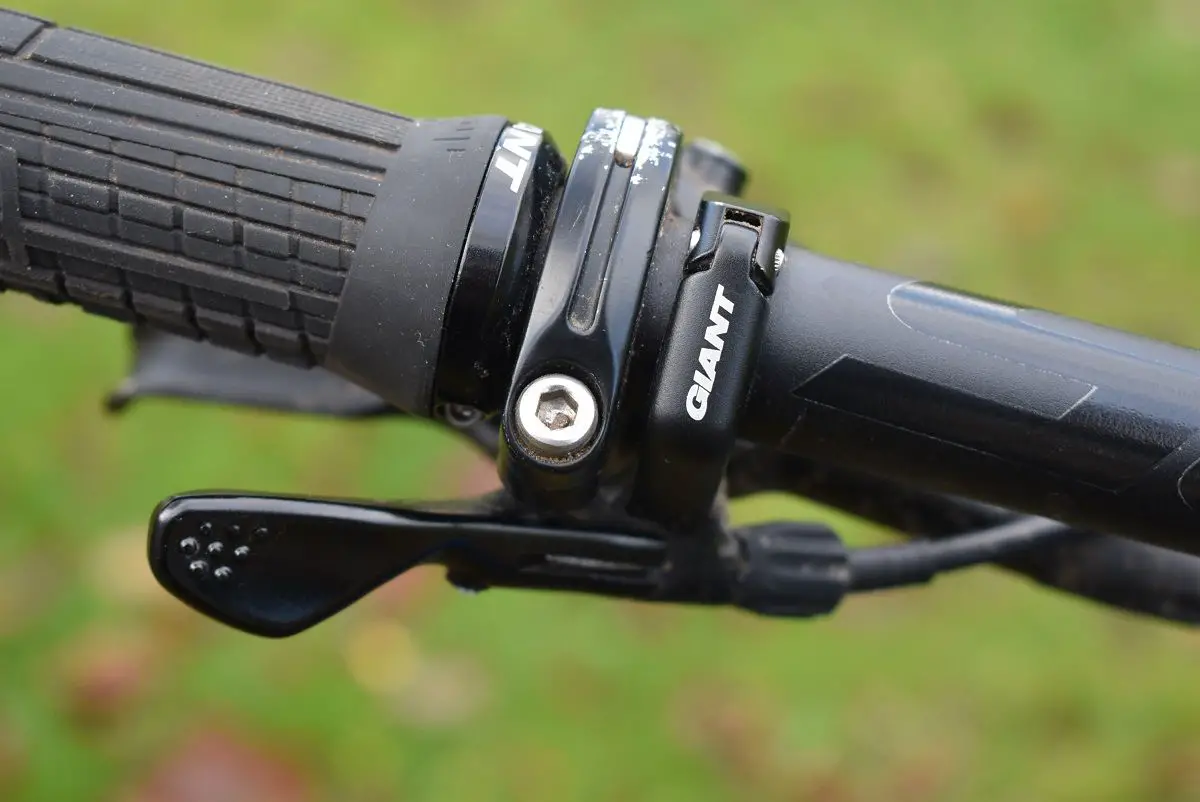
Brakes are taken from Shimano’s MT520 / 521 range. They are basic in that they do not offer tool free reach adjustment but when combined with 200 mm Shimano rotors, offer no small amount of braking power.
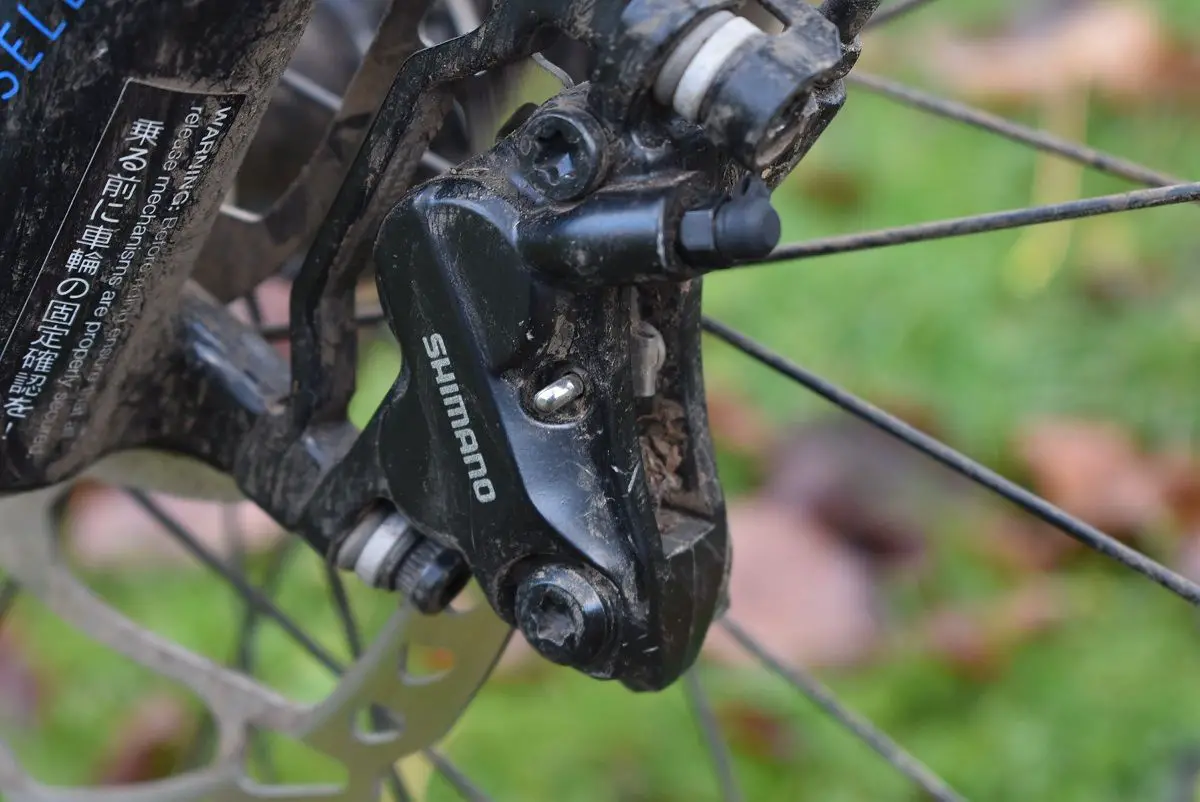
Finally, the saddle is a Giant Contact (neutral) number and despite my previous positive experience on the Reign E bike I tested earlier in the year, this particular one had all the comfort of a no star guest house in Margate in November. After a fair amount of persistence, my hind end could take no more chaffing and it was replaced with an ever dependable WTB Rocket for the remainder of the test. Cue one happy butt!
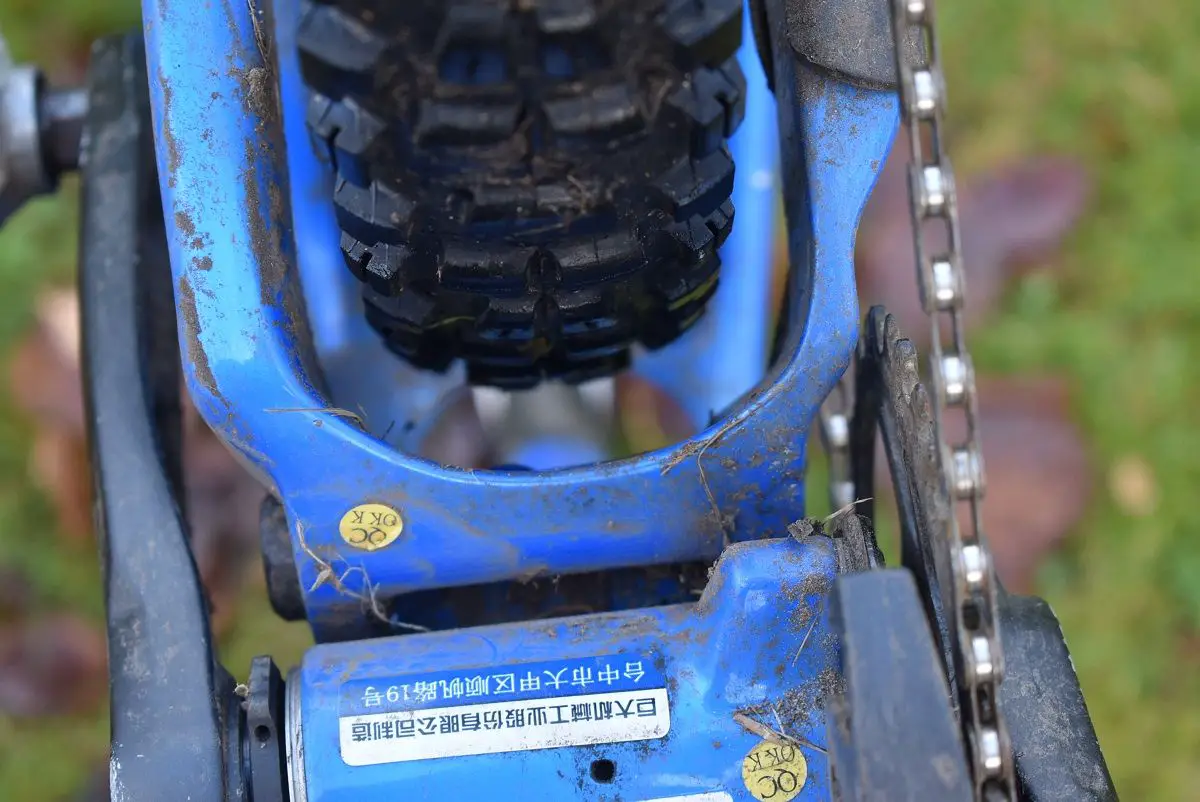
In terms of marketing, Giant are pretty unequivocal about the design intentions of the Reign Advanced Pro 2. It is first and foremost an Enduro bike and Giant make great play of its ability to “ride aggressive descents and rail corners with confidence” coupled with 29er wheels promising “improved balance and stability, giving you the momentum to crank up tough climbs and confidence to fly on fast, technical descents”. Add in suspension described as “super plush, active and shreddable”, Giant haven’t held back in their description of what they bill as their pro level Enduro machine. Cutting through the hyperbole, the machine is effectively being marketed as a do it all bike that can climb, descend and race with the best of them. No small claim eh? But how does it fare in the real world of bike riding? Does it do what is claimed of it or in the words of Chuck D, should we not believe the hype? Only one way to find out so that is what I set out to do.
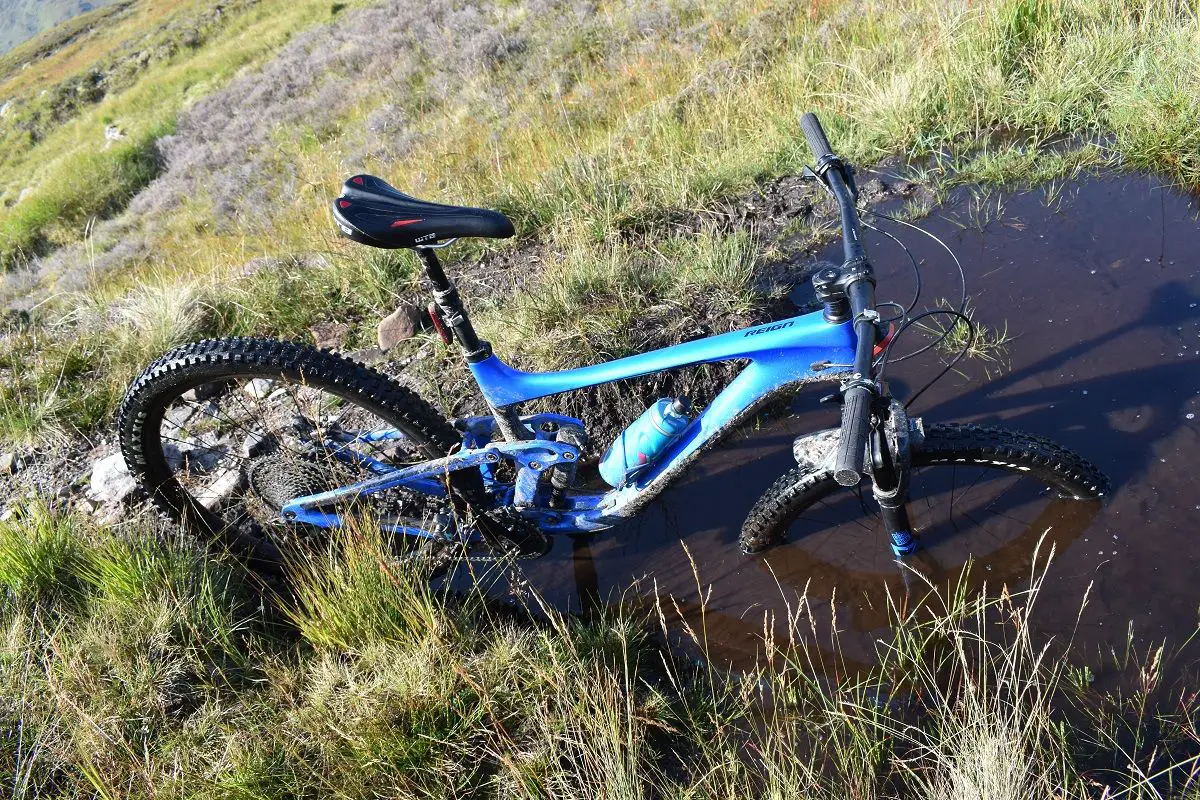
It’s all about the ride!
Jumping on the bike for the first time, the top tube length had that Goldilocks just right feel too it meaning that I didn’t feel either stretched out or cramped. At 6 foot 1, I was bang on size for a large. Taking it for an initial spin, after a bit of tinkering to remove the chain guide, to raise the bars and to tweak the gears which came supplied a bit out of whack, the Reign Advanced Pro 2 displayed no initial weird handling characteristics which would require me to get used to them. On tarmac, it got up to speed in jig time and kept its momentum without too much effort. That’s not to say it is a flying machine but on long stretches of tarmac to, from and during rides, it didn’t feel like too much of a hinderance in the way that some Enduro oriented machines can. Being an active design, I did notice a discernible bobbing action as I spun the pedals. It is not a show stopper but it is definitely there. Flipping the lever on the rear shock 180 degrees and turning the right hand adjuster on the forks to lock them out noticeably improved matters. At the risk of sounding picky, I would have preferred to have an on the fly lever to lock out the rear shock. I know it tends to be the preserve of pure race machines these days but this Giant is definitely a bike that would benefit from this. I suspect my previous experience riding Canyon’s Strive with its Shapeshifter technology has spoiled me with its ability to adjust the rear shock.

In terms of climbing, when set to fully open, the Reign Advanced Pro 2 does a remarkably good job of getting up even the steepest of climbs. Whether rocky tech fests or smooth but long grinds, the Reign does a pretty decent job of getting you to the top. While its overall weight will always preclude it from being an uphill ripper, it is a bike that you can enjoy climbs on rather than just have to endure them. On steep and tight uphill switchbacks at low speeds, the slack front end occasionally led to it wandering a little. A bit of body English and weighting the front was required at times but the Giant is by no means unique in this regards when it comes to Enduro machines. It is part of the trade off that comes with a slack head angle. On the really steep stuff, the short head tube and long top tube did a pretty effective job of keeping the front end from popping up. As someone who likes the challenge of a steep climb, I very much appreciated this characteristic.
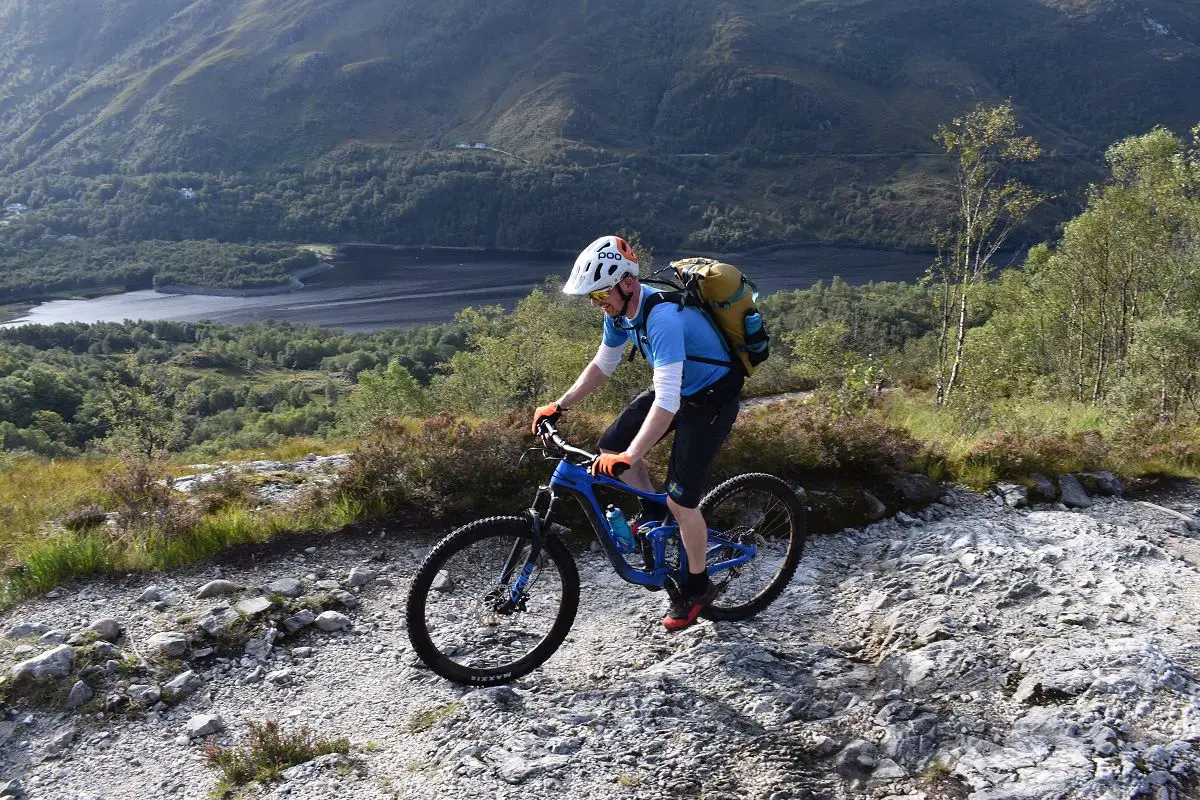
However, I was less keen on the gearing choice. A 32 tooth ring is fine for racing but for big days out in the hills, I found myself on several occasions hankering for something lower. To this end, I decided to fit a 28 tooth ring. Costing less than £15, it was not exactly a major expense and I looked forward to properly unlocking the Giant’s climbing potential. And so it was that I embarked on what can only be described as an exercise in frustration and failure aka “Operation I hope you don’t kiss your mother with that potty mouth!” In their wisdom, SRAM have a recommended torque setting of over 50Nm for their Descendant chainset. Starting with my extra-long Allen key, I quickly upgraded to a breaker bar. After much wailing and gnashing of teeth, as I could feel the bolt beginning to strip, I had to admit defeat. There was no way that I was going to get the chainset off meaning that I was stuck with the 32 tooth ring. For the home mechanic, this is somewhat less than ideal. Having had exactly the same experience previously with a carbon crank also from the SRAM stable (despite availing myself of the not inconsiderable knowledge and experience of World Cup mechanic Carl Geeson of Bikelove), this raises the question of what happens when you need to replace your chainring? Compared to Shimano and some other crank manufacturers, I think SRAM simply aren’t at the races here and for me it would be enough to make me ask my LBS to replace the chainset before buying the bike. In practical terms, it meant that I never got to truly exploit the Reign’s climbing ability to the full which is a shame as it gives every indication of being very capable indeed.
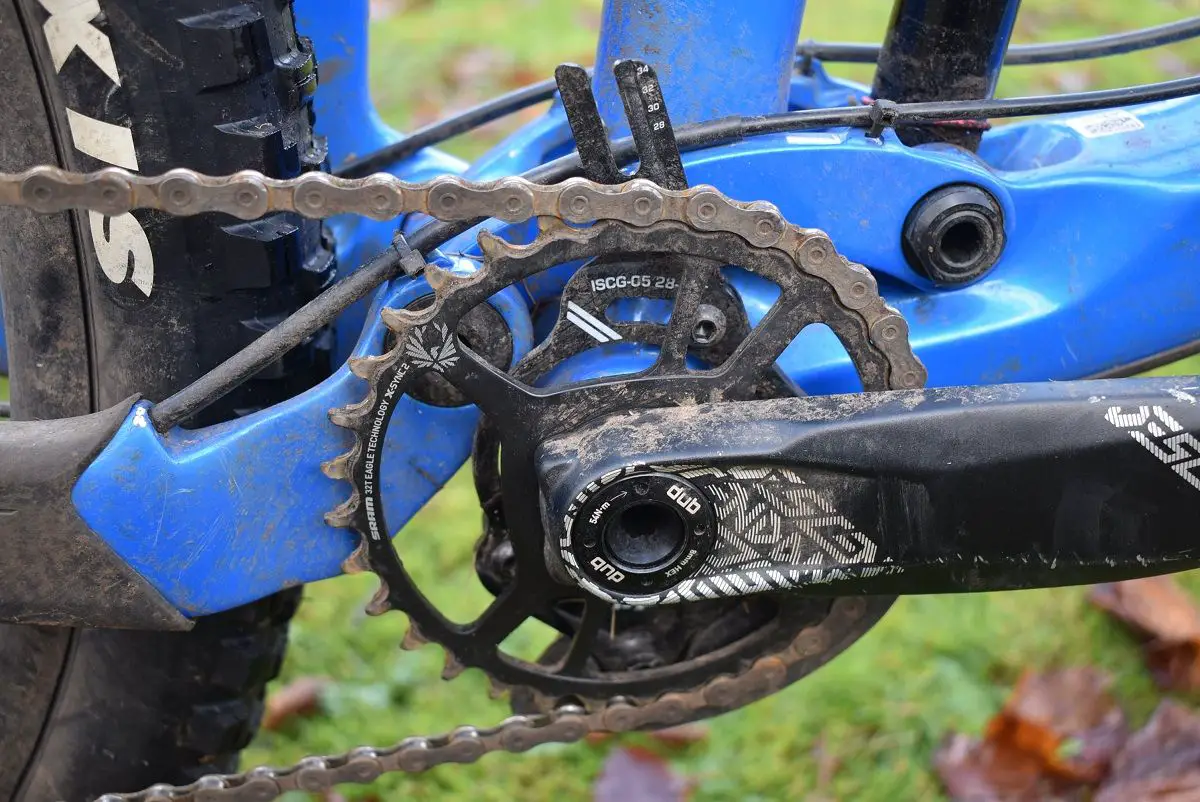
After every climb comes a descent and it is on fast and steep descents that the Giant really shines. The wide bars and low front end effectively position the rider to take a fairly aggressive approach to descents. What this meant in practical terms was that I found that the Reign performed best when ridden aggressively, actively weighting the front wheel and throwing the bike around a bit. I have no delusions about being a fast downhill rider – as Clint Eastwood once said, “A man has got to know his limits!” but the Giant did a good job of flattering my abilities and made for some really fun times on the downs. Whether on smooth and flowing man made trails such as in the Tweed Valley or on open, rocky and technical mountain descents, the Reign Advanced Pro 2 works best when ridden with a bit of confidence. The suspension action remained pretty fluid throughout although when it comes to stutter bumps and repeated hits in quick succession, it did not so much get overwhelmed but it lost a little of its composure. The big wheels give short shrift to trail obstacles that get in their way in a manner that 650B wheels simply don’t.
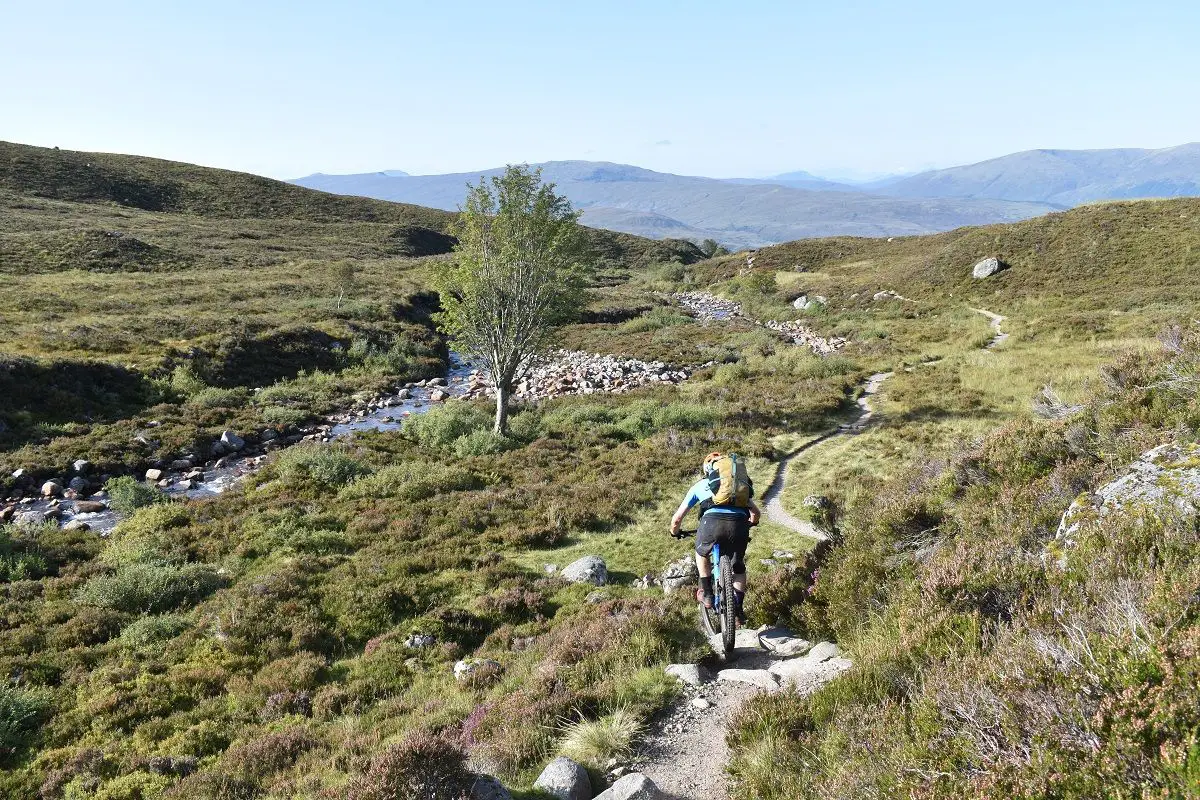
On slow speed, steep tech where endo hops come into play, the Reign Advanced Pro 2 is a little less surefooted. The low slung geometry that works well for fast aggressive riding is less at home when you are not going full gas. Coming off the shoulder of Cairngorm on a steep, rocky ridge, I found the limits of the design on a couple of step downs where I felt pitched just a little too far forward. The combination of a short head tube, a steerer a bit lacking in spacers and being limited to 160mm of travel up front made for a less capable experience. Lines that I have ridden before quite comfortably had me pausing to reflect and question whether I wanted to do them. I’m not saying that the Giant is in any way a poor performer but rather it suffers a little in terms of the choices made at the assembly stage. Cutting down the steerer in the factory and offering only a few headset spacers may look good on the shop floor but not everyone wants a slammed front end. It deprives the buyer of the ability to spec a higher font end without resorting to a higher rise handlebar or even a brand new fork. It is easy to cut a steerer down. Reinstating it is the harder thing to do. Giant are not unique in this respect so I’m not going to single them out for criticism here. Lots of manufacturers do it. However, in the context of this test, a simple change in the assembly process by adding a few extra spacers and leaving it to the LBS to cut the steerer down would make life a lot simpler and potentially cheaper for a lot of riders, myself included.
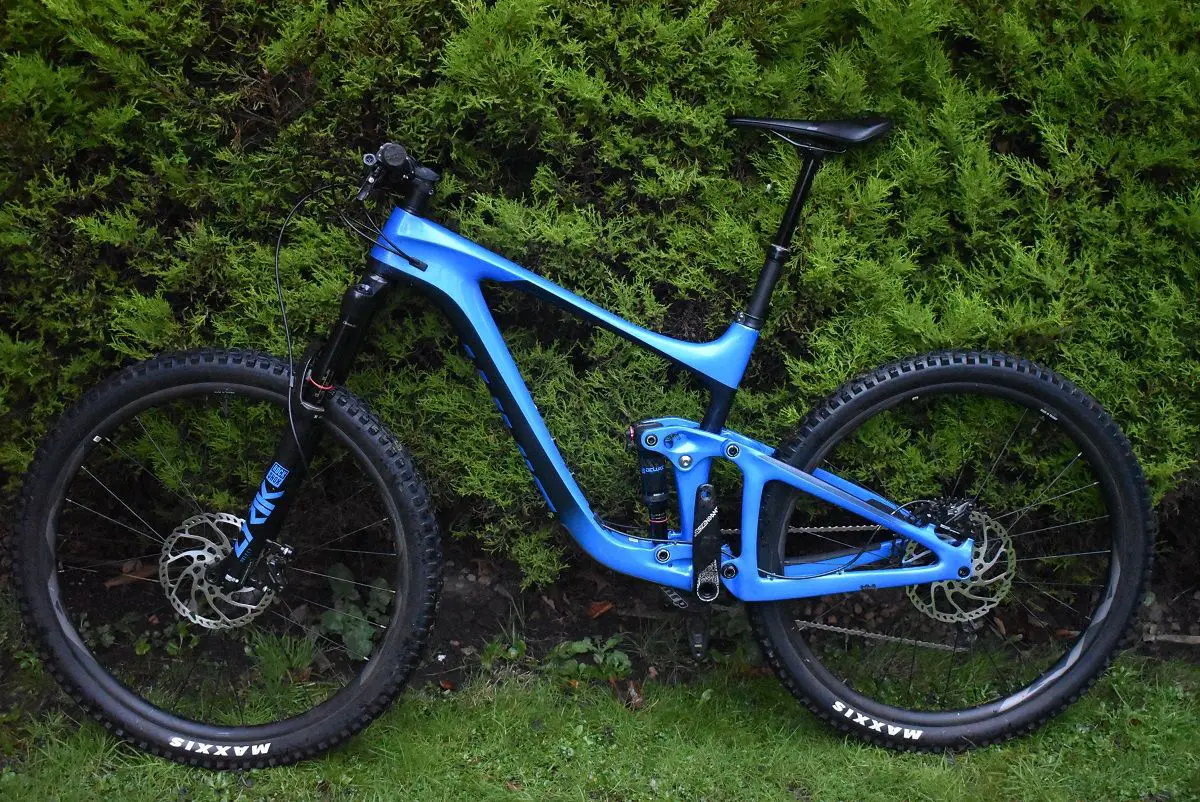
In terms of all day comfort, the suspension design proved itself very capable. At no time on the test did I wish for more travel at the back. As such, I reckon Giant have hit a bit of a sweet spot marrying comfort and performance. What it does, it does very well indeed, even allowing for the minor pedal induced bob on the tarmac. The dropper post proved to be a reliable performer and never let me down, or, at least, not unintentionally! (Argh – Ed) A slight dip in performance was noticeable on filthy, wet rides without a mudguard on the back where it became a little bit stiction-y, for want of a better phrase, but that is something common to many dropper posts.
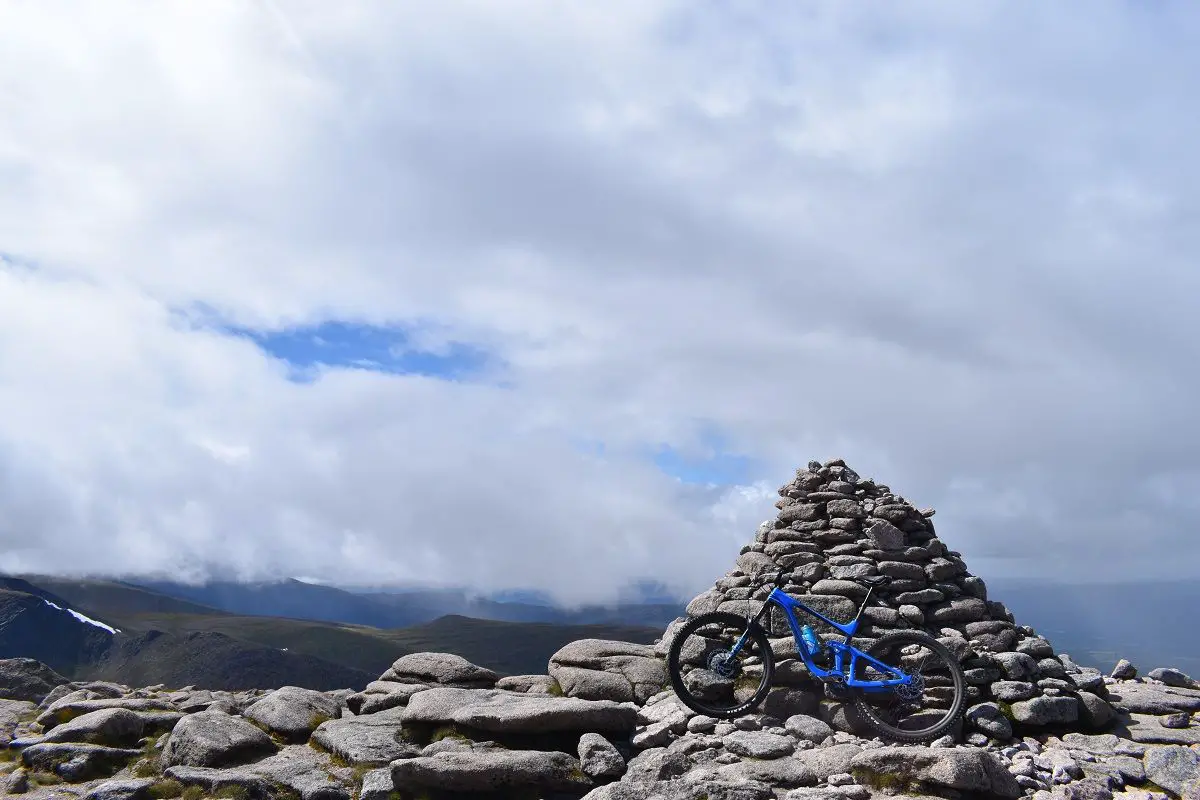
Where the Reign loses out a little is when it comes to all day epics. As restrictions lifted and I was able to finally get out on more meaty rides such as an ascent of Cairngorm or the Tour De Ben Nevis, it became apparent that the wide bars and low front end weren’t entirely conducive to rider comfort. As the hours racked up, I found myself increasingly riding with my hands in the middle of the bars or dropping the saddle a little in order to relieve pressure on my hands, arms and shoulders at the expense of pedalling efficiency. The low slung front end that makes for an engaging Enduro experience was found wanting when all day XC and big mountain riding was the order of the day. Raising the bars was not an option as I had already maxxed out on spacers so a higher rise bar was needed. To my relief, not only did this go a long way to resolving matters on big days out but it also improved the downhill performance on steeper and more technical trails. Ultimately, it confirmed my suspicion that in stock form as currently supplied, for me at least, there is just too great a drop between the saddle and the bars. While this may read as a criticism, it isn’t meant to be. Giant have it within their hands to quickly and easily make a very minor and inexpensive change that could properly unlock the considerable potential of this bike. It already rides extremely well within the parameters of what an Enduro bike should excel at but it could be made even better and attract a wider range of riders of varying abilities.
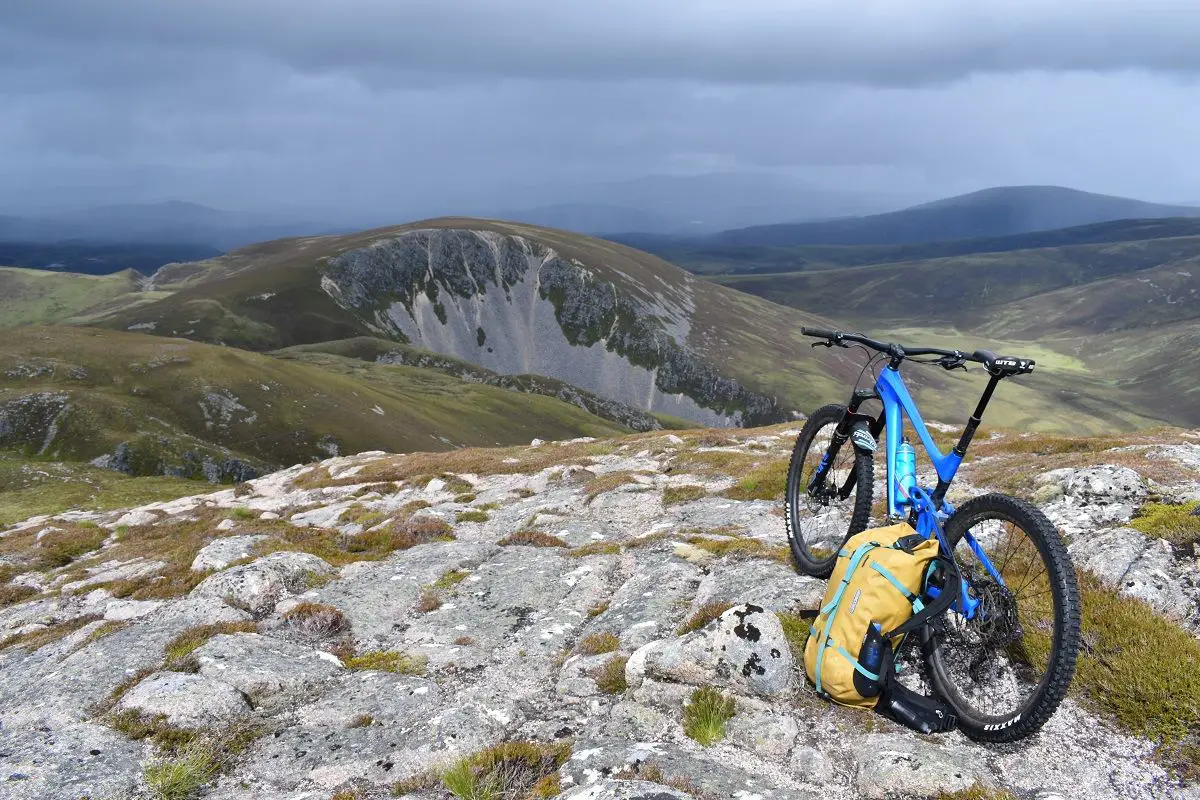
Going back to general handling characteristics, I found the Reign Advanced Pro 2 to be quick to respond to fast changes of direction and it had a playful snap to it that meant winch and descent type rides were a lot of fun. The Rock Shox suspension was faultless. It was easy to set up, did everything I asked of it and was utterly reliable. While the fork and shock may lack the bells and whistles of more expensive offerings, I rather like their simplicity of adjustment. At no point did I hanker for more knobs or dials to turn and twiddle. The one thing I did miss was the old style QR Maxle. The latest version of the Lyrik features an Allen key bolt so when it comes to dropping the wheel out for loading it into the car, it felt like a bit of a backward step.
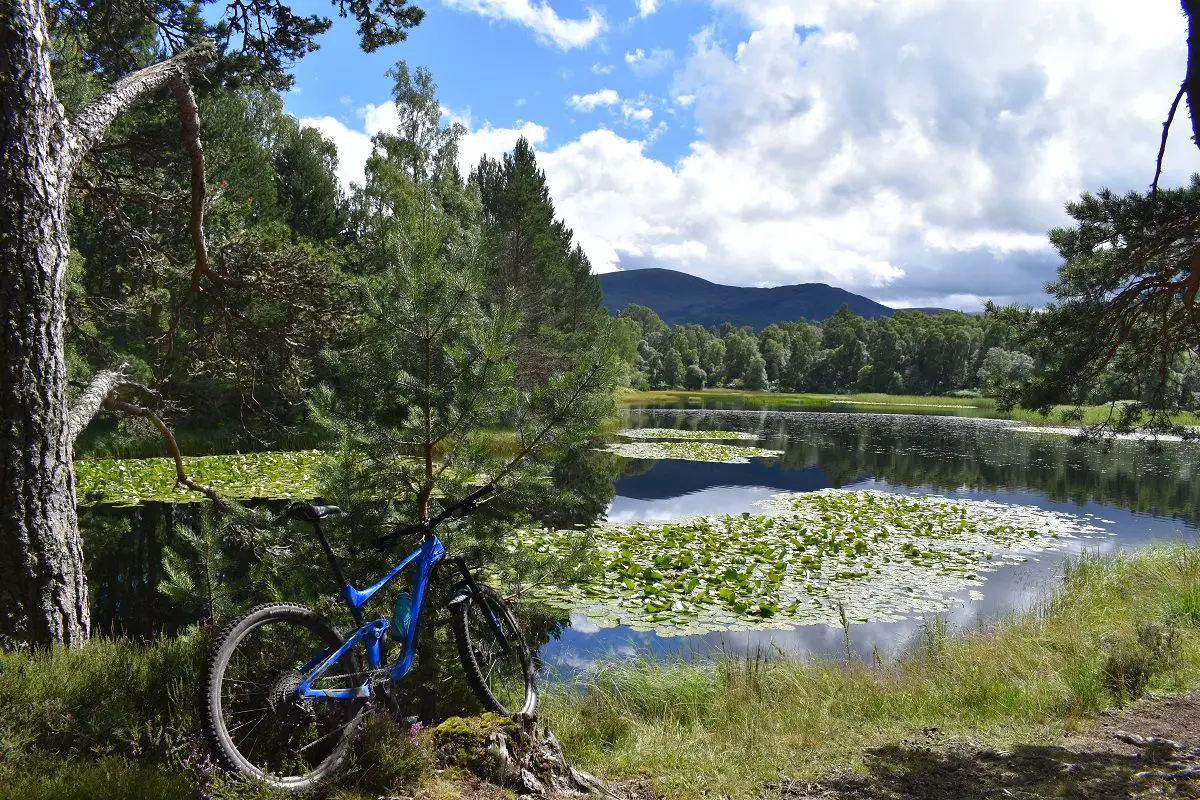
In terms of drivetrain and brake performance, leaving aside my issue with the chainset, I came away reasonably impressed with the NX groupset. It kept going through some pretty hellish conditions, it shifted smoothly and accurately most of the time with only the very occasional mis-shift where I had to press the shifter just a little bit more. The shifting action was light to the touch. As for the brakes, well they stopped me every time. As it transpired, I never actually missed the lack of on the fly adjustment. They may not have the looks and features of their more expensive stablemates but they work and that is the important thing.
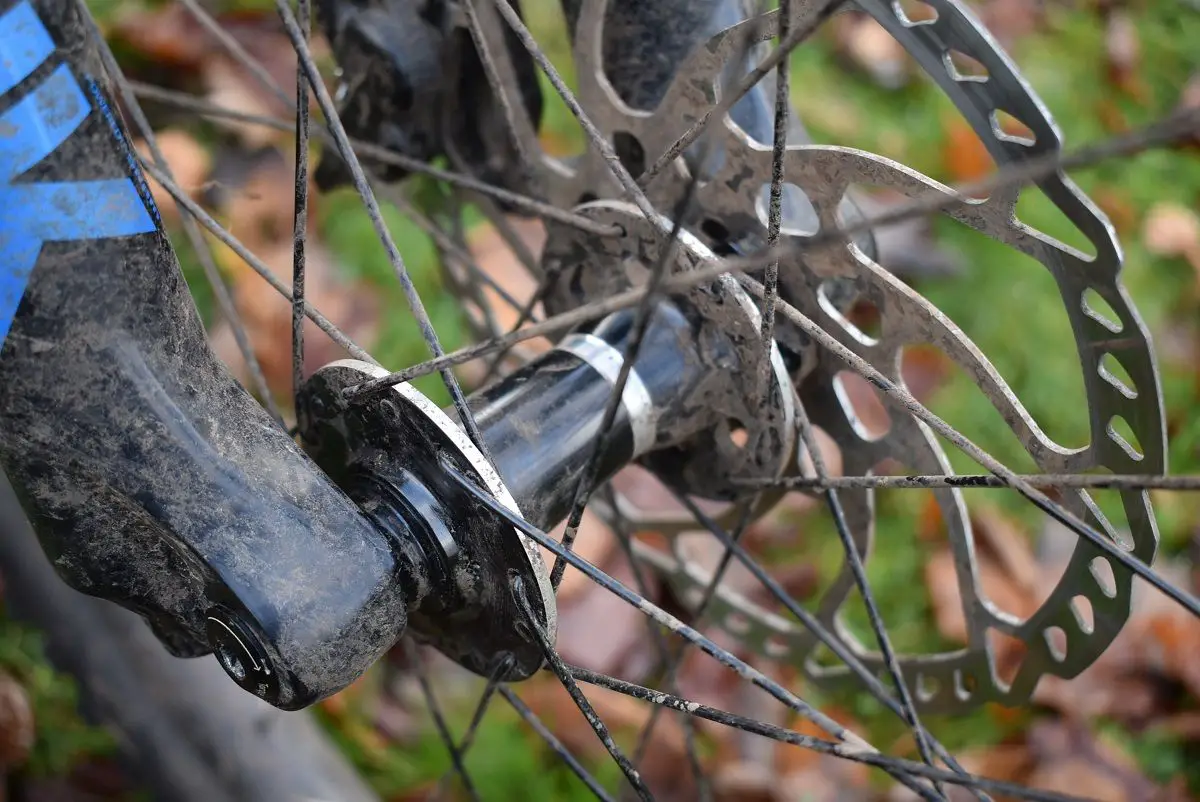
As with previous Giants I have tested, the wheels have proven to be a real highlight. They may not look particularly fancy but the combination of weight, strength and reliability they bring is a real winner in my book. I didn’t need to tickle them with the spoke key at any point. They just kept turning smoothly on their bearings and allowed me to just enjoy the ride. Sure, a pair of carbon rims would have been a potentially nice addition but at no time did I feel I was being short changed. The Maxxis tyres have long been a favourite in my book. In my experience, they are a good all round tyre and cope well with most types of terrain and conditions, gloopy mud and clay excepted. They came supplied in tubeless format and with the odd exception of having to pump up the back tyre every week to maintain pressure, they performed pretty much flawlessly with one unfortunate exception.
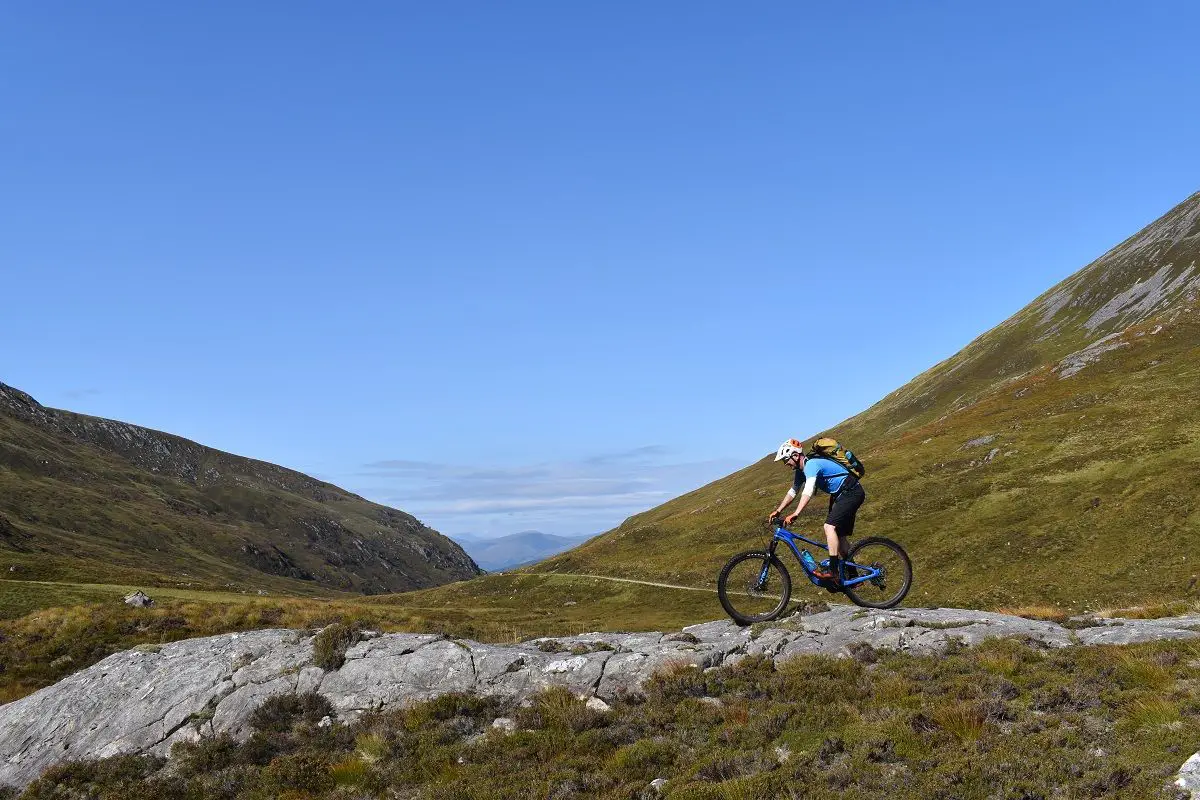
Riding through a deep channel of bedrock beneath the northern corries of Ben Nevis, my back tyre unexpectedly lost pressure and washed out on a hitherto grippy section of trail, causing me to slip sideways and catch my non driveside chanstay on a rock. Even as I type this, I’m not quite sure what happened but the upshot was a deep gouge in the paintwork into the carbon below. It was a real kick in the nuts and an unwelcome reminder that rocks and carbon aren’t necessarily the best bedfellows. I was happy to keep riding the bike since but it made me realise the benefit of having rubberised protection on that side to match the drivetrain side.

When cleaning the bike down to return to the good people at Giant, I noticed that the paintwork was coming away around the lower pivot above the bottom bracket. At first I thought it was dirt but when I gently ran my nail over it, I could feel a tiny edge. Whether it was caused by the swing arm impact or not, I am not sure but when I contacted Giant, they informed me that paint faults are covered under warranty. Given that Giant have a pretty stellar reputation in the industry when it comes to warranty, I was not in any way concerned and mention it more in passing than as something to worry about. All bikes ultimately fail. It’s how a manufacturer deals with legitimate warranty claims that really matters and on this count, Giant seem to be right up there.

Three things we liked:
- Absolutely nails the design brief of a race capable Enduro bike.
- Looks fantastic.
- Brilliant component choice that marries performance with reliability.
Three things we would change:
- Supply it with an uncut steerer to unleash its true potential.
- Replace the chainset with one that doesn’t require Arnie arm strength to remove.
- Add protection to the non-driveside chainstay.

Overall
So what do I think of the Reign 29er? In the right hands and for its intended design purpose as an uncompromising Enduro race bike, Giant have come very close to delivering a bike that lives up to its billing. It is an undeniably fun bike to ride and really comes alive when ridden hard and at speed. The bike looks utterly gorgeous, the suspension works in that no fuss manner that you don’t quite appreciate until you sling your leg over another bike and realise what you are missing, while every component proved reliable throughout the duration of the test.
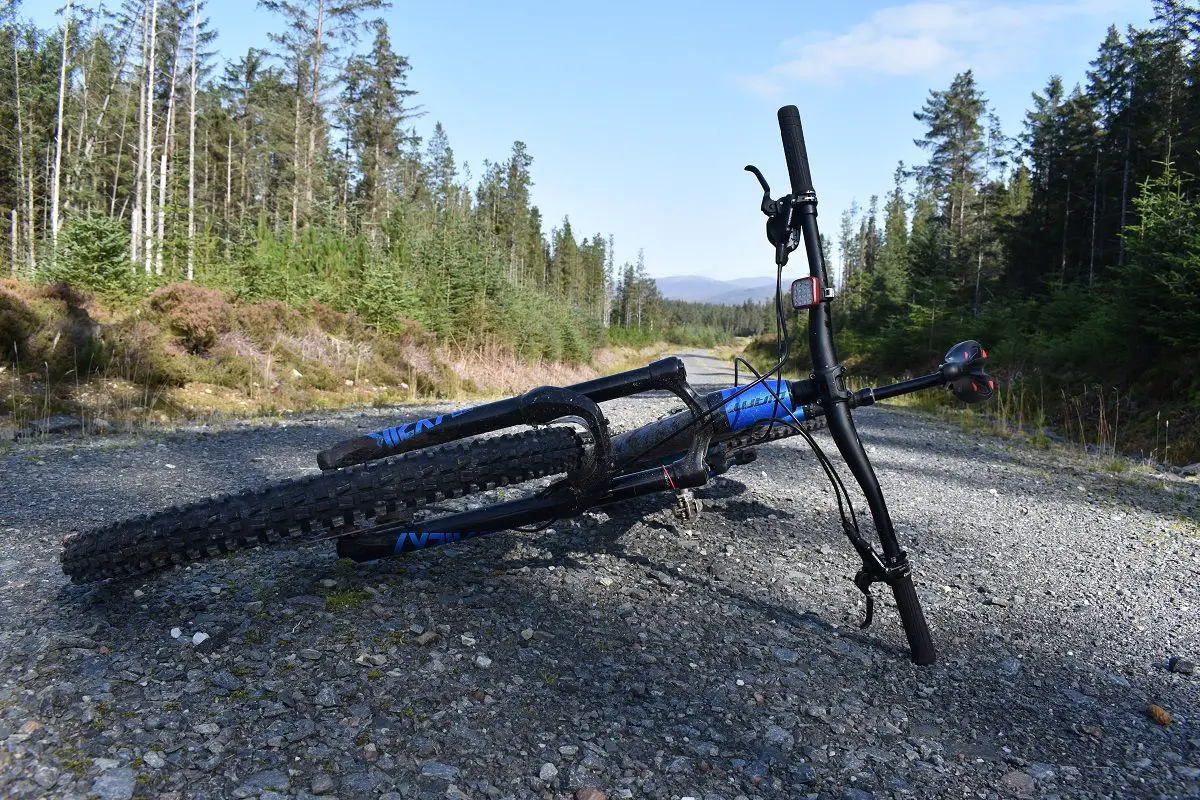
Where I remain to be convinced is when the bike is ridden as a general day to day bike. If you aren’t charging hard but are looking for a machine that is all day comfortable, it’s not quite there. Installing a higher rise bar or, better still, supplying the bike with more steerer column, would have a transformative effect and open the bike up to much wider applications. If you are a long, low and slack rider, you will have a blast on the Reign 29er but if your tastes are more all-encompassing and you want a do it all bike, you might feel a little short changed. As you read this, don’t come away thinking I don’t like the bike. I absolutely do but I also believe that with two minor modifications, Giant would have a brilliant bike on their hands that would appeal to a far greater range of riders. The basic design and the spec are all there. Everything works. It is only a couple of small steps away from being brilliant but that are steps that only Giant can take.
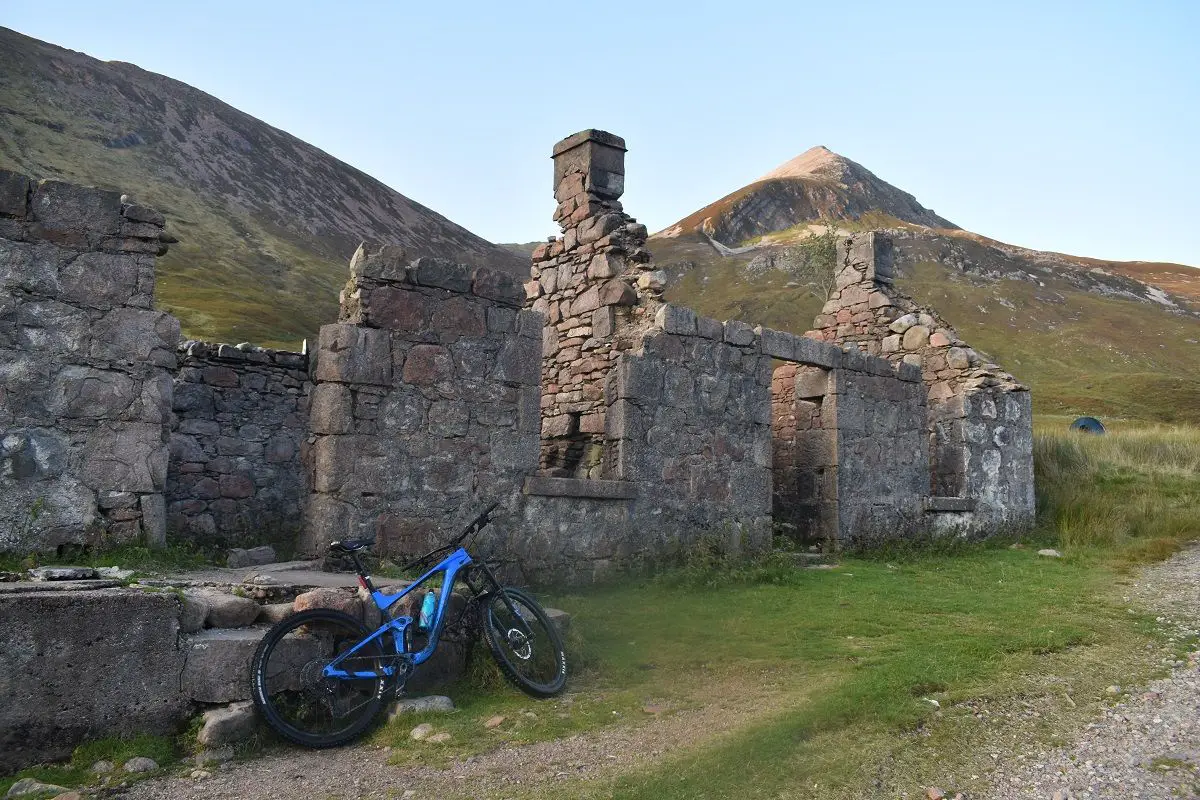
Singletrack Merch
Singletrack Sponsored Features
Featured Premier Partner
Join our mailing list to receive Singletrack editorial wisdom directly in your inbox.
Each newsletter is headed up by an exclusive editorial from our team and includes stories and news you don’t want to miss.





I think the proof reader has the day off. I doubt the forks are made from advanced composites
Great review, very informative and didn’t just focus on performance riding up and down. Nice pictures, too, with some beautiful scenery. I’m not jealous at all.
@chrismac Holiday? I wish! Late night more like.
@hannah. I’m sure it was 🙂
chrismac
That cock up is on me. Clearly not a composite fork! Sorry about that!
Thanks for the nice feedback brakestoomuch.
If you like the pics, check out the forthcoming issue as the big mountain stuff was taken as part of a feature coming up about riding round Ben Nevis! Bloomin’ brilliant day out!
Cheers
Sanny
I had a reign with paint problems a few years ago, fell off in chunks in various places. Giant not interested at all, no hint of warranty even being considered.
@David. Only meant as a friendly opportunity for a quick correction. We all know what you meant
Ha! Ha! No worries chrismac.
That was just poor on my part so feel free to keep correcting me! Kleerly my edjucashun shood huve been gooderer!
Cheers
Sanny
It’s a shame their geometry is so widely spaced between sizes. I mean a 455 reach on a medium and then a 493 on a large? Same with their top tube lengths. Cray cray.
Working in a bike shop I have come across a fair few SRAM chainsets but have never had muuch of an issue with removing it or chainrings.
Maybe the Hulk did yours up?
shugglez
The last 2 long term Enduro bikes have both had the same issue – the Reign and a Strive. The latter had both me and Carl at Bikelove going at it with a bar and brand new bits. When we could see the frame flexing and the bolt began to strip, we had to admit defeat.
I had the same issue with the Reign.
In comparison, a Shimano chainset is a veritable joy to remove. I like the mount design for SRAM rings but in practical terms, if I cannot get the crank off without fear of damaging it, I have to question the set up.
It is good to hear that you have not had the same problems though. Perhaps I have just been unlucky but if either were my own bike, I would be less than impressed.
Cheers
Sanny
Interesting read and great photography of a lovely bit of the world.
Interesting choice of bike for the location though. Or rather interesting choice of location/ride to test the bike. My natural instincts would be that was somewhere for shorter travel bikes in a perfect world. A testament to the capabilities of enduro travel bikes now that it was a good companion (save changes to the bars).